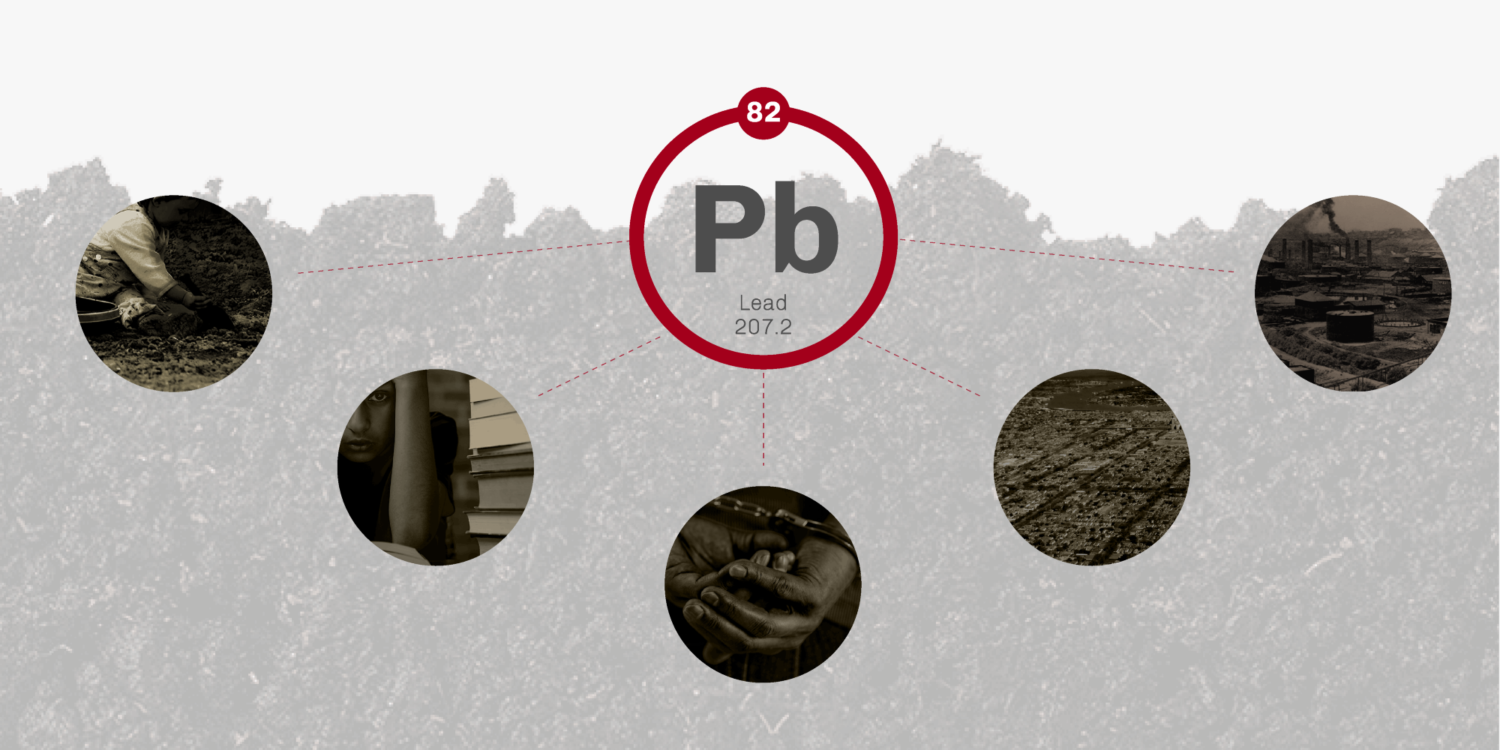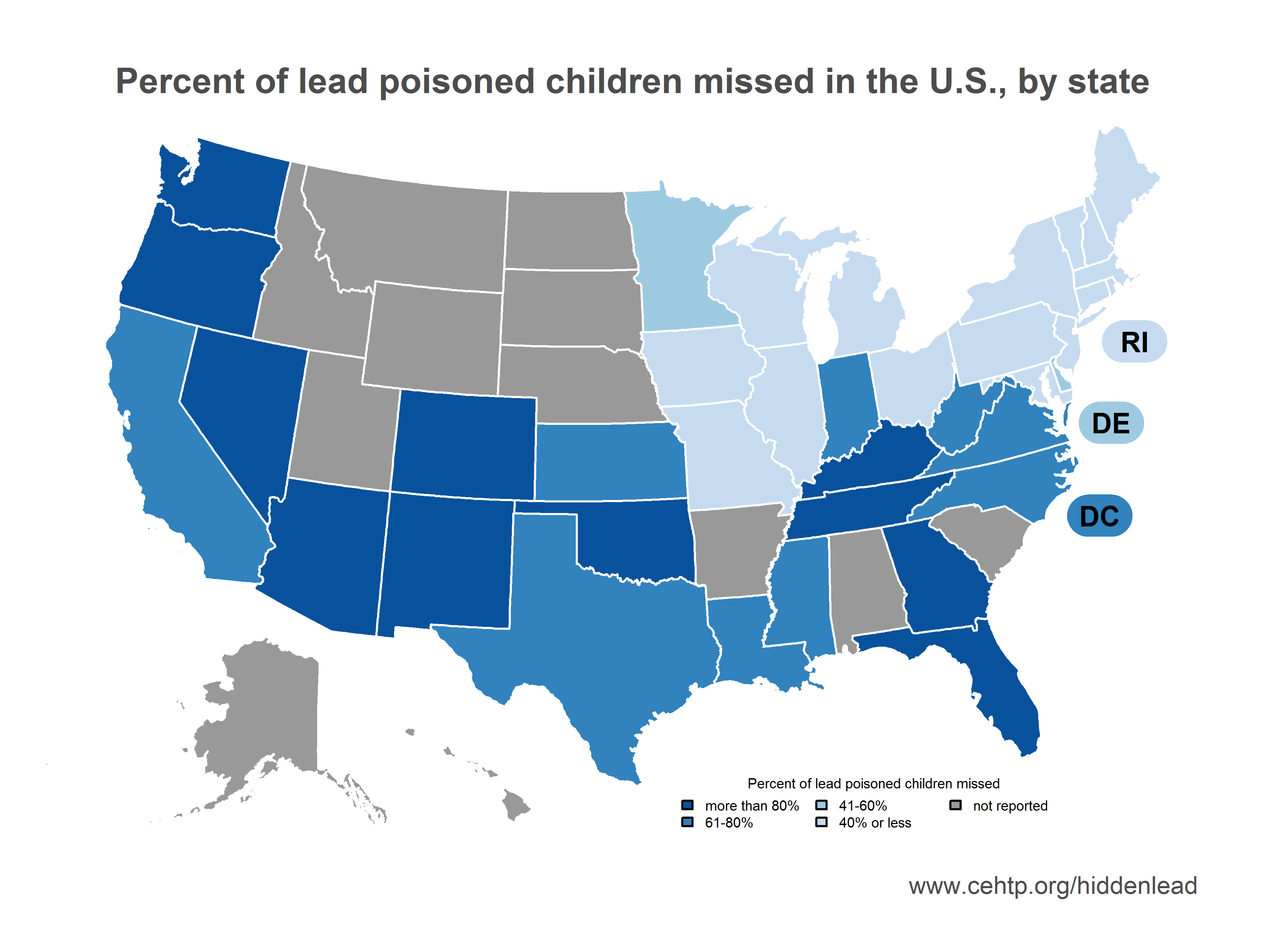
In the News
The Hidden Toxic Threat in America’s Backyards
-
Focus Areas
Environmental Health -
Expertise
Research – Surveillance -
Programs
Tracking California

Childhood lead poisoning dramatically decreased across America as the federal government began phasing out leaded gasoline in the 1970s. But many children are still being exposed today because of lead’s legacy: polluted environments, particularly in urban areas.
Now we know that even low concentrations of lead in children are dangerous to their health and well-being. Yet federal, state and local policies have failed to keep up with scientific research and do not protect children from lead’s irreversible consequences.
The U.S. Environmental Protection Agency’s definition of a lead soil hazard in areas where children play is 400 parts per million (ppm) of lead or greater. This is the same standard set by California regulations and adhered to by the state’s Department of Public Health when responding to childhood lead poisoning cases.
Experts say these standards aren’t stringent enough to protect children from being led-burdened. The federal and California soil lead standard of 400 ppm has no margin of safety for children, say the leading experts on childhood lead poisoning. The California Office of Environmental Health Hazard Assessment has deemed that level too dangerous for children and lowered its soil standard to 80 ppm in 2009, but this is not a state regulation. ThinkProgress tested more than 1,000 soil samples in homes and public spaces throughout Santa Ana, Ca. Nearly a quarter of the samples surpassed the hazardous level of 80 ppm set by the Office of Environmental Health Hazard Assessment.
In 2012, the U.S. Centers for Disease Control and Prevention (CDC) announced that no level of lead in children is safe. The number of Santa Ana children tested with dangerous levels of lead in their blood exceeds the state average by 64 percent. This number includes only those with levels higher than 4.5 micrograms per deciliter (mcg/dL). There are a far greater number of Santa Ana children who have tested with levels below 4.5 mcg/dL, but most laboratories that test children’s blood lead levels don’t measure below 3 mcg/dL, making it impossible to track precise levels for children in this lower range.
Even if these children were properly identified, they wouldn’t qualify for public health intervention services such as a home visit, an environmental investigation, and case monitoring because they don’t qualify as lead poisoning cases under California Department of Public Health guidelines.
Research shows that children who have blood lead levels below 5 mcg/dL can experience serious consequences such as cognitive deficits, behavioral issues, and educational delays, but those children often don’t show acute physical symptoms of lead poisoning. Studies have also found that children with low to moderate blood lead levels experience the most IQ point loss.
A recent Public Health Institute study found that California and many other states across the country are severely undercounting and underreporting the number of lead-burdened children. African American and Latino children are especially impacted by lead exposure.
Read the full article, and browse the five-part series.
A Hidden Problem: Lead-Poisoned Children in the United States

How many children in the United States suffer from lead poisoning? See the new study from PHI’s California Environmental Health Tracking Program (CEHPT), which shows that the numbers of lead-poisoned children may be much higher than previously reported.
Using new analytical methods, CEHTP estimated that during 1999 – 2000, most states may have missed more than half of their lead-poisoned children, finding only 2 out of every 3 children poisoned by lead. The study found states where more than 80% of lead-poisoned children could remain unidentified—and researchers expect that testing rates have only declined in the subsequent years. The findings suggest that recent lead poisoning estimates that are based solely on clinical data are too low, and that without swift and decisive action, many lead-poisoned children will remain undiagnosed.
See the study and infographic.
Originally published by ThinkProgress
More Updates
Work With Us
You change the world. We do the rest. Explore fiscal sponsorship at PHI.
Support Us
Together, we can accelerate our response to public health’s most critical issues.
Find Employment
Begin your career at the Public Health Institute.



